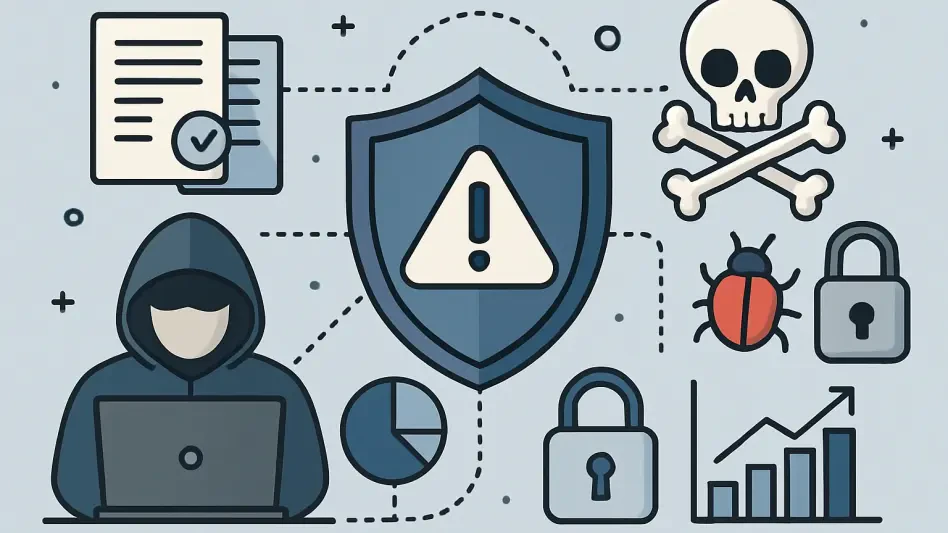What happens when a coordinated cyberattack strikes multiple European nations, shutting down power grids, disrupting hospitals, and paralyzing financial systems in a matter of hours? This chilling scenario isn’t just a hypothetical—it’s the kind of crisis that BlueOLEx 2025, a high-stakes cyber crisis simulation hosted by ENISA in Cyprus, is designed to confront. With digital threats growing more sophisticated by the day, this executive-level exercise brings together EU leaders to test their readiness and forge a united front. The urgency of such preparation cannot be overstated in a world where a single breach can ripple across borders, threatening millions.
The significance of this event lies in its mission to transform fragmented national defenses into a cohesive, EU-wide shield. Cyberattacks are no longer isolated incidents; they are transnational crises that demand synchronized action. BlueOLEx 2025 serves as a critical proving ground, revealing how well Member States can collaborate under pressure and highlighting gaps that must be addressed. For businesses, citizens, and policymakers, the outcomes of this simulation are a blueprint for safeguarding Europe’s digital future against an ever-evolving enemy.
The Rising Tide of Cyber Threats in Europe
In today’s digital landscape, the EU faces an unprecedented wave of cyber threats that can destabilize entire economies overnight. From ransomware attacks halting critical infrastructure to state-sponsored hacks targeting democratic processes, the scale and complexity of these dangers are staggering. Europol reports a 40% increase in significant cyber incidents across Member States from 2025 to the projected figures for 2027, underscoring the relentless pace of this challenge.
This escalating risk exposes a harsh truth: no single nation can stand alone against such threats. A breach in one country can quickly cascade into a regional crisis, as seen in past incidents like the WannaCry ransomware attack, which affected over 200,000 systems worldwide. The need for a unified response has never been clearer, and BlueOLEx 2025 emerges as a pivotal step toward building that collective resilience.
Core Components of a Unified Defense
At the heart of BlueOLEx 2025 are several key elements designed to test and strengthen EU cybersecurity coordination. The simulation focuses on the EU-CyCLONe network, a platform that facilitates real-time communication among national authorities during a crisis. By putting high-ranking officials through realistic scenarios, the exercise uncovers weaknesses in current protocols and enhances situational awareness across borders.
Another vital aspect is the inclusion of all Member States, emphasizing that every nation, regardless of size, plays an indispensable role. Hosting the event in Cyprus, a smaller country, sends a powerful message about shared responsibility. Additionally, insights from the simulation feed into the broader Cyber Blueprint, ensuring that lessons learned translate into actionable policy updates for a more robust framework.
The data speaks for itself—previous exercises of this nature have led to measurable improvements, such as a 30% faster response time to cross-border incidents after procedural refinements. This iterative approach ensures that the EU remains agile, adapting to new threats with precision and unity.
Leadership Voices Echoing Commitment
The power of BlueOLEx 2025 is amplified by the insights of key figures who participated in the event. George Michaelides, Cyprus’s Commissioner of Communications, captured the spirit of collaboration, stating, “Cybersecurity isn’t tied to a nation’s size but to our collective resolve—every Member State strengthens Europe’s defense.” This perspective highlights the equal weight of each country’s contribution.
Henna Virkkunen, Executive Vice-President for Tech Sovereignty, Security, and Democracy, stressed the importance of alignment, noting, “Harmonizing national and EU-level strategies is essential to counter unpredictable threats.” Meanwhile, Juhan Lepassaar, ENISA’s Executive Director, emphasized adaptability: “Regular simulations keep us sharp in a constantly shifting threat environment.” These statements, combined with discussions on public-private partnerships through the ENISA Cyber Partnership Program, reflect a shared determination to build a fortified digital frontier.
Strategies to Solidify EU Cyber Resilience
Beyond identifying vulnerabilities, BlueOLEx 2025 offers a roadmap for actionable improvements. One priority is standardizing communication protocols within the EU-CyCLONe network to ensure seamless information sharing during crises. Such consistency can cut through delays, enabling rapid, coordinated action when every second counts.
Another strategy involves scheduling regular training at both executive and operational levels, covering a range of threat scenarios to maintain preparedness. Policymakers are also encouraged to integrate findings from the event into the Cyber Blueprint, refining guidelines to address procedural shortcomings. Finally, strengthening ties with private industry through partnerships can bring critical expertise and resources to the table, closing gaps that governments alone cannot fill.
Reflecting on a Milestone in Cyber Defense
Looking back, BlueOLEx 2025 proved to be a defining moment in the EU’s journey toward cybersecurity unity. It brought to light both the strengths and challenges of current systems, fostering a deeper understanding of what true collaboration entails. The event underscored that digital safety is a shared burden, one that demands ongoing commitment from every corner of the Union.
As the lessons from this simulation continue to shape policies and practices, the next steps are clear: Member States must invest in sustained training, refine cross-border mechanisms, and deepen industry collaboration. The path ahead requires vigilance and innovation, ensuring that Europe not only responds to digital threats but anticipates them, staying one step ahead in an increasingly connected world.








